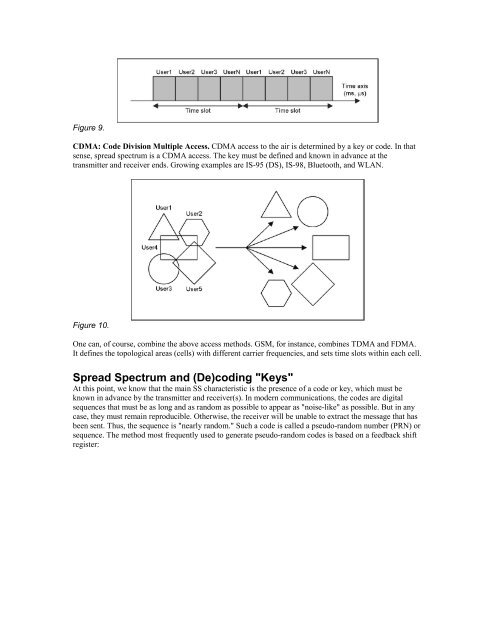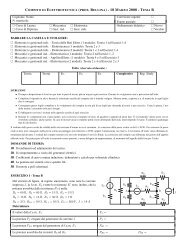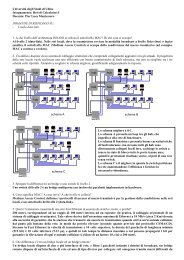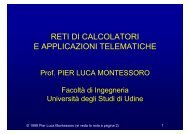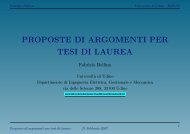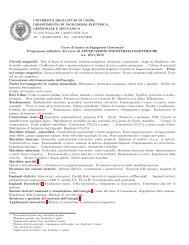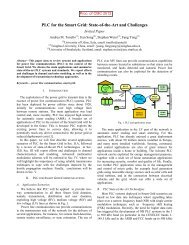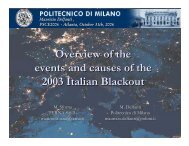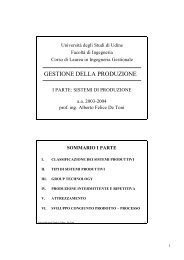An Introduction to Direct-Sequence Spread-Spectrum ... - diegm
An Introduction to Direct-Sequence Spread-Spectrum ... - diegm
An Introduction to Direct-Sequence Spread-Spectrum ... - diegm
Create successful ePaper yourself
Turn your PDF publications into a flip-book with our unique Google optimized e-Paper software.
Figure 9.CDMA: Code Division Multiple Access. CDMA access <strong>to</strong> the air is determined by a key or code. In thatsense, spread spectrum is a CDMA access. The key must be defined and known in advance at thetransmitter and receiver ends. Growing examples are IS-95 (DS), IS-98, Blue<strong>to</strong>oth, and WLAN.Figure 10.One can, of course, combine the above access methods. GSM, for instance, combines TDMA and FDMA.It defines the <strong>to</strong>pological areas (cells) with different carrier frequencies, and sets time slots within each cell.<strong>Spread</strong> <strong>Spectrum</strong> and (De)coding "Keys"At this point, we know that the main SS characteristic is the presence of a code or key, which must beknown in advance by the transmitter and receiver(s). In modern communications, the codes are digitalsequences that must be as long and as random as possible <strong>to</strong> appear as "noise-like" as possible. But in anycase, they must remain reproducible. Otherwise, the receiver will be unable <strong>to</strong> extract the message that hasbeen sent. Thus, the sequence is "nearly random." Such a code is called a pseudo-random number (PRN) orsequence. The method most frequently used <strong>to</strong> generate pseudo-random codes is based on a feedback shiftregister:


